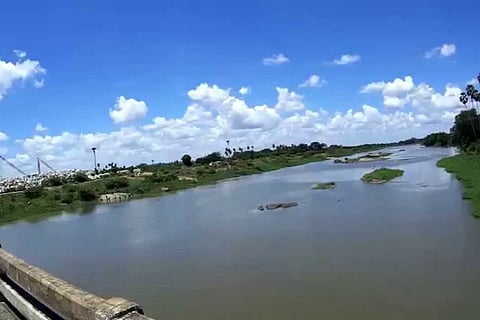

The Thamirabarani civilisation in Tamil Nadu is at least 3,200 years old, reveals carbon dating done on organic material retrieved from archeological excavations in Sivakalai, Thoothukudi district. In the backdrop of these findings, Tamil Nadu Chief Minister MK Stalin announced a Rs 15 crore museum in Thirunelveli to exhibit findings from the excavations. The museum will be called Porunai, an ancient name for the Thamirabarani river.
On August 27, the Beta Analytic Testing Laboratory in Miami, USA released carbon dating results of rice and soil in a burial pot retrieved from Sivakalai in Thoothukudi district. The results showed that rice and soil existed as far back as 1155 BCE, which is 3,200 years ago. This is the oldest time period established from findings in the excavations carried out in Tamil Nadu.
Results of carbon dating done on findings from the Thamirabarani excavations
Stalin also added that excavations will be carried out in other states for presence of Tamil trade links. In the first phase, the port of Musiri, now known as Pattanam in Kerala, will see archeological excavations undertaken with experts from Kerala to study the Chera kingdom. Further studies will also be conducted in Vengi in Andhra Pradesh, Palur in Odisha and Thalaikudi in Karnataka.
CM Stalin added that the State Archeological Department would also conduct research in Pernika Anecce and Quaker al-Qadim in Egypt to establish Tamil links. These regions were once part of the Roman Empire. Studies will also be done in Khor Rori in Oman to establish Tamil trade links as pot shreds with proto Tamil scripts have been uncovered in these countries. The studies will be done jointly with archeologists from the respective countries.
Apart from this, excavations will also be done in South East Asian countries such as Indonesia, Thailand, Malaysia, Vietnam etc for Tamil links pertaining to the Chola empire.
The findings from Sivakalai have caused ripples in Tamil Nadu as it could lead to evidence that there was a city civilisation in south India as long back as 3,200 years ago, the later part of the Indus Valley Civilisation.
Speaking about the significance of this finding, Nadika Nadja, writer-activist and history enthusiast says, “People like Iravatham Mahadevan (Indian epigraphist and civil servant) and Asko Parpola (Finnish Indologist) have always believed that the Indus Valley Civilisation (IVC) was a Dravidian civilisation, and new research has also found that the people over there spoke a language that could be either closest to proto Dravidian, or actual Dravidian, which is Tamil. The IVC collapsed around 1600-1700 BCE (dates go to 1900 BCE or even earlier). However, by 1200 BCE there was no IVC. But now, we have found that there were people living in Tamil Nadu during the 1200 BCE civilization. With this, we could probably establish a cross link between the Indus Valley and Tamil civilization, and probably prove that the Tamil people lived in both places and had extensive trade links in both places.”
The Sivakalai excavations have unearthed the oldest date established from studying artefacts dug up from Keezhadi, Adichanallur, Korkai and other areas. Earlier, Adichanallur excavations established that a civilisation thrived even in the 980 BC.
Chief Minister Stalin also spoke about more findings from these excavations. A silver punch marked coin was recently excavated from Keezhadi. It bore the symbols of the sun, the moon, the taurine and other geometrical patterns. Studies on this found the coin to date back to the 4th century BC, which is before the time of the ancient Maurya empire.
Further findings from Adichanallur and Korkai yielded timelines going back to the 9th and 8th centuries BC, proving that an ancient civilisation existed along the Porunai river.
Adichanallur, Korkai and Sivakalai are all sites on the banks of the ancient Porunai (Thamirabarani river) presently in the Thoothukudi district of Tamil Nadu.
“There are big takeaways from these findings,” says Nadika. The first one is that earlier, it was believed that there was no city civilization in south India, she adds. “The first urbanisation in the sub continent happened in the IVC and the second urbanisation happened on the banks of the Ganga at the end of the Mauryan period. Now we have found that even before the Mauryan period, there were silver coins found in Adichanallur,” she says.
Further, the Keezhadi excavations show that there was extensive literacy in Tamil Nadu by at least 600 BCE, i.e even 2,600 years ago common folk could read in Tamil Nadu. “The Tamil Sangam poetry has also confirmed that Tamil culture was a city culture. Now the Sivakalai Porunai findings show that this is true and the civilization existed earlier than we imagined. From 1155 BCE, there were strong occupation layers in Tamil Nadu. The findings substantiate this and even go beyond the time period given in Sangam poetry,” Nadika explains.